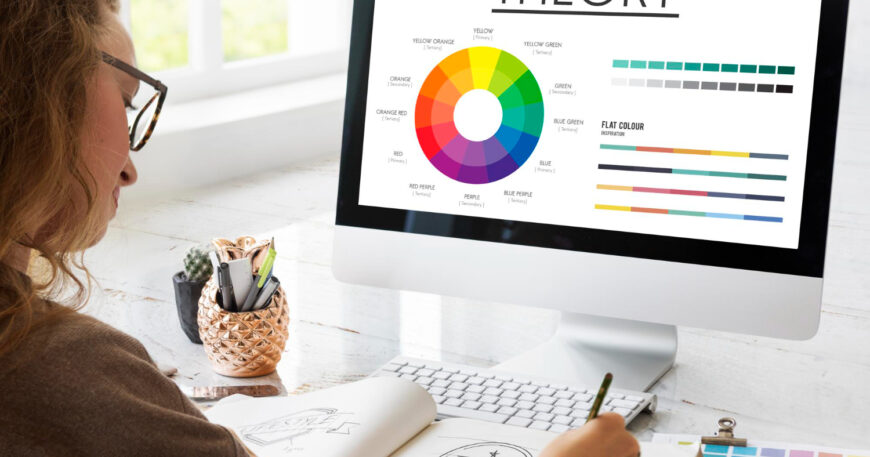Within the discipline of graphic design, color theory is not merely a foundational principle but an essential factor that significantly enhances efficient visual communication. So, what is color in graphic design? At its most basic level, color in graphic design is epitomized by the application of tints and tones to communicate messages, stimulate emotions and improve the aesthetics of visual material. Learning about what is color theory in graphic design equips designers with knowledge that influences their selection decisions, which ultimately affect brand identity, user experience and overall design efficacy.
Color theory is a structured framework that assists designers with finding combinations of complementary colors. It involves looking into how colors function together and in contrast to one another, which can affect sight. The importance of this theory lies in its ability to help create designs that are visually appealing and sustainable as they conform more effectively to the aims of a company and desires of its customer base.
Color in graphic design examples demonstrate the varying ways colors can impact people’s feelings and views about things. Example, a brand aimed at young people may use bright vivid colors while an upscale brand is better off using softer understated colors. This is because of color theory which lays down the law on how effective colors should be used.
One notable instance of famous use of color theory in graphic design today. An example of such is clearly illustrated by Coca-Cola’s logo which is one of its famous characteristics. The striking red and white colors of Coca-Cola aren’t there by chance; instead they purposefully make people feel excited and happy, two emotions that are associated with this beverage brand. Similarly, IBM has also incorporated blue and white colors in their logo in order to project a sense of professionalism and trustworthiness as per the basic tenets of color theory, thereby strengthening the company’s brand identity.
Such a technique can transform how companies like Zion Elira IT Solution conduct their business. By understanding and utilizing the psychological influence of colors, Zion Elira IT Solution will be able to design a color theory that is appealing to their customers. For instance, applying blue shades may create an impression of trustworthiness and reliability – something very vital for providers of technology apparatuses – whereas adding green would mean stimulating progressiveness and change.
Color in graphic design examples often highlight how different industries use color theory to their advantage. In the healthcare sector, calm and soothing colors like soft blues and greens are used to convey a sense of peace and trustworthiness. In contrast, the entertainment industry might opt for bold and vibrant colors to capture attention and evoke excitement.
A good website uses color themes that help people to use it and also guide their movements through it, a strategy for color theory developed for web design. For example, call-to-action buttons are often made to be more visible by applying contrasting colors that attract attention to them and influence the users’ participation. Using principles of color, the designers create an engaging user experience which is consistent with the overall brand goals.
In summary, color theory is an essential instrument in graphic design that aids designers in making decisions which are both beautiful and deliberate. Understanding what is color theory in graphic design and applying it helps in coming up with impressive designs that convey the intended message of the brand. By mastering color theory one can ensure that graphic design continues to be a strong channel for visual communication and brand representation, whether through classic use cases or cutting edge innovations. This demonstrates the deep influence color theory can hold on how successful designs turn out; notions like this could help companies such as Zion Elira IT Solutions improve their brand images and connect better with their target market.



